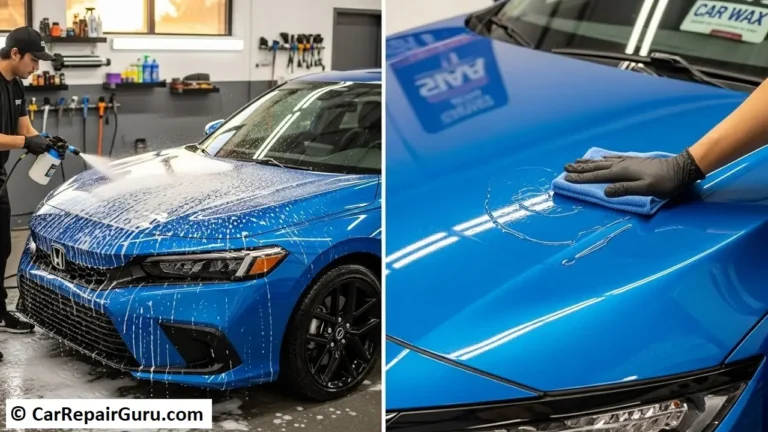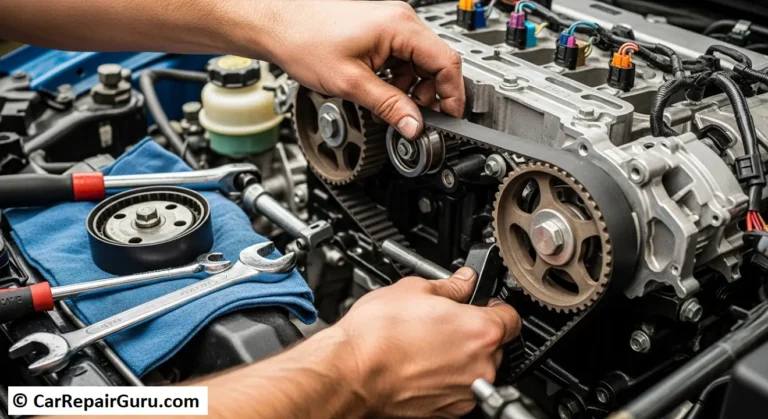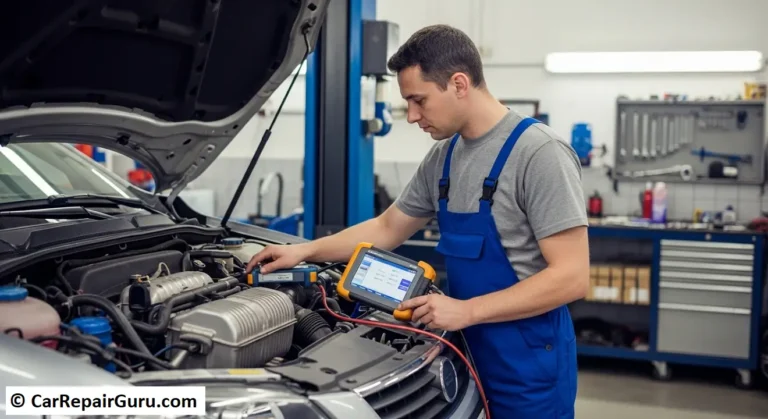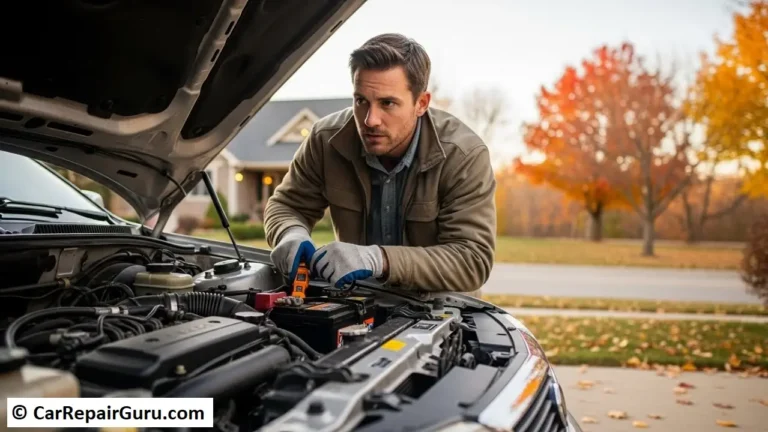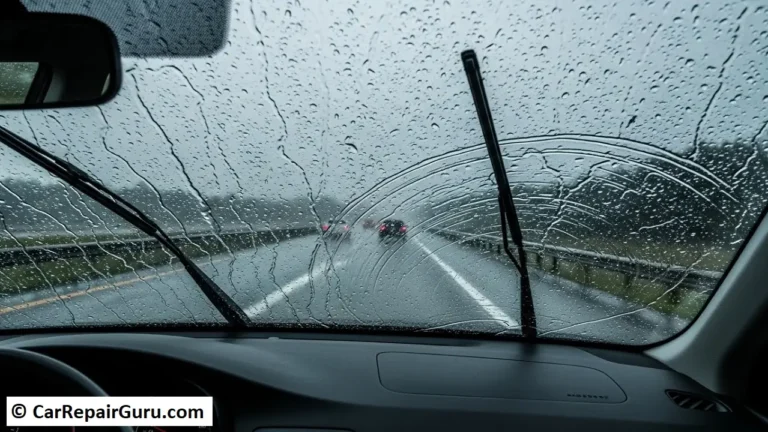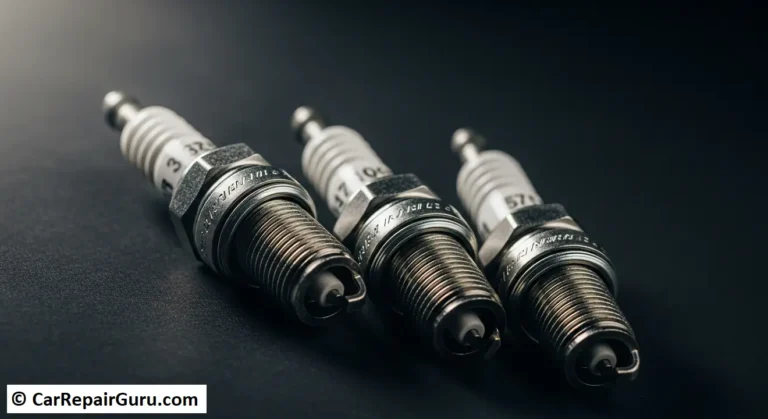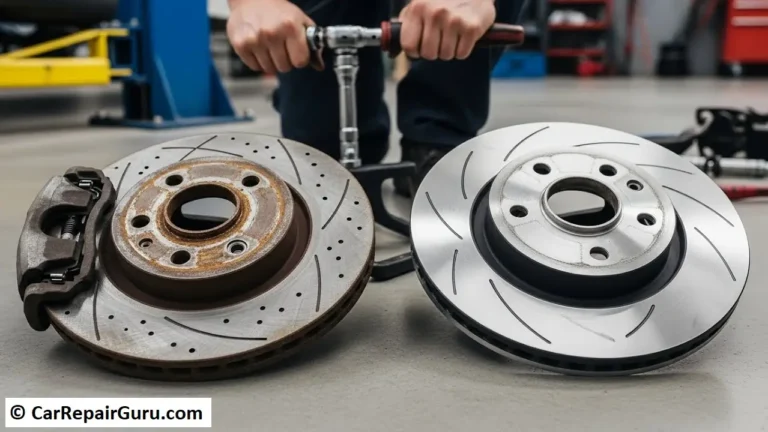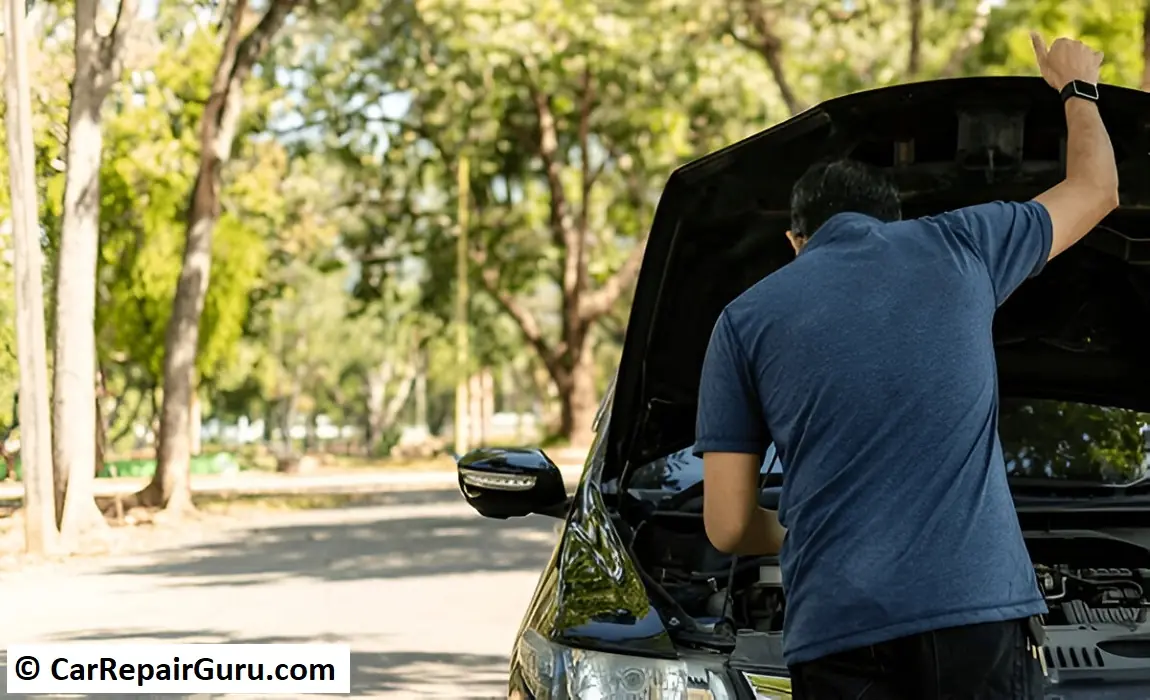
You’re running late, you hop into your car, turn the key (or press the start button), and… nothing. Your car won’t start. It’s one of the most frustrating moments a driver can experience, especially when you don’t know what’s causing it.
A car that won’t start can stem from a variety of issues, ranging from a dead battery and a faulty ignition switch to more complex problems like a fuel system failure or a bad starter motor. Sometimes, the car clicks but won’t start, while other times, it may crank but still refuse to fire up.
This guide is designed to walk you through the most common reasons your car won’t start and, more importantly, how to fix them. Whether it’s a quick jump-start or a more in-depth repair, understanding these issues can save you time, money, and frustration. Let’s get your car back on the road!
Dead or Weak Battery
A dead or weak battery is the most common reason why a car won’t start. Your battery provides the initial power needed to crank the engine, and when it’s weak or drained, your car simply won’t turn over.
Signs of a Dead Battery:
- Dim headlights and interior lights: If your lights are unusually weak or flickering, your battery might not have enough charge.
- Clicking sound when turning the key: This usually means the starter isn’t getting enough power.
- No dashboard response: If the instrument panel remains dark, your battery may be completely drained.
Common Causes:
- Leaving headlights or accessories on overnight.
- Cold weather, which can reduce battery efficiency.
- An aging battery (most last 3-5 years before weakening).
How to Fix It:
- Jump-start your car using jumper cables and another vehicle.
- Check battery voltage with a multimeter (a healthy battery should read around 12.6V when the car is off).
- Replace the battery if it no longer holds a charge.
If your car won’t start after a jump-start, the issue may be with the alternator or starter motor, which we’ll cover next.
Faulty Starter Motor
If your car won’t start but the battery seems fine, the problem could be a faulty starter motor. The starter’s job is to crank the engine when you turn the key or press the start button. If it fails, your engine won’t turn over, no matter how much power your battery has.
Symptoms of a Bad Starter:
- A single click or no sound at all when turning the key.
- Dashboard lights turn on, but the engine won’t crank.
- Smoke or a burning smell near the engine (indicating an overheated starter).
Common Causes:
- Worn-out starter solenoid (prevents electrical current from reaching the starter).
- Loose or corroded electrical connections, affecting power delivery.
- Internal starter motor damage from prolonged use.
How to Fix It:
- Check the battery first—a weak battery can mimic starter issues.
- Tap the starter gently with a tool—sometimes, a temporary fix for a stuck solenoid.
- Test the starter motor by bypassing it with a jumper wire.
- Replace the starter if it’s faulty.
If your car clicks but won’t start, a bad starter motor could be the culprit. If replacing it doesn’t solve the issue, consider checking the ignition switch or alternator next.
Ignition Switch Problems
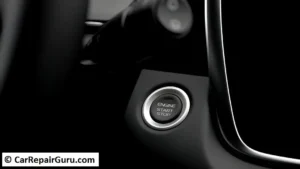
A faulty ignition switch can prevent your car from starting, even if the battery and starter motor are in good condition. The ignition switch is responsible for sending power from the battery to critical engine components. If it fails, your car may not start at all, or it might crank without firing up.
Signs of a Bad Ignition Switch:
- No dashboard lights when you turn the key.
- The engine cranks but won’t start (indicating a failure in the ignition circuit).
- Intermittent stalling while driving (a failing switch can disrupt power).
Common Causes:
- Worn-out ignition cylinder from repeated use over time.
- Electrical issues like loose connections or damaged wiring.
- Failed internal components within the ignition switch itself.
How to Fix It:
- Check the battery and starter first to rule out other issues.
- Test for power at the ignition switch using a multimeter.
- Inspect wiring connections for corrosion or looseness.
- Replace the ignition switch if it fails electrical testing.
If your car won’t start but the battery is good, a failing ignition switch could be the problem. If replacing it doesn’t solve the issue, the fuel system or security system might need inspection next.
Empty or Contaminated Fuel Tank
If your car cranks but won’t start, one of the simplest yet often overlooked causes is an empty or contaminated fuel tank. Without enough clean fuel, your engine won’t have the power it needs to start and run properly.
Symptoms of Fuel Issues:
- The engine cranks but doesn’t start (indicating no fuel is reaching the combustion chamber).
- Sputtering or stalling while driving.
- A strong smell of bad or stale fuel.
Common Causes:
- Running out of gas—sometimes, a faulty fuel gauge can mislead you.
- Water or debris contamination in the fuel tank.
- Using old or poor-quality fuel, which can clog fuel injectors.
How to Fix It:
- Check the fuel gauge—if it’s low, refuel and try starting again.
- Listen for the fuel pump when you turn the key (a silent pump may be faulty).
- Drain and replace contaminated fuel if you suspect water or dirt in the tank.
- Use a fuel system cleaner to clear minor blockages.
If your car still won’t start after refueling, there may be a fuel pump, fuel filter, or fuel injector issue, which should be checked next.
Fuel Pump Failure
The fuel pump is responsible for delivering gasoline from the tank to the engine. If it fails, your engine won’t get the fuel it needs to start and run properly. A failing fuel pump can cause intermittent issues before it completely stops working.
Signs of a Bad Fuel Pump:
- Car cranks but won’t start (fuel isn’t reaching the engine).
- Engine struggles or stalls at high speeds due to inconsistent fuel flow.
- Whining noise from the fuel tank when turning the key.
- Sudden loss of power while driving.
Common Causes:
- Clogged fuel filter, restricting fuel flow to the engine.
- Overheating fuel pump, often due to frequent low fuel levels.
- Electrical failure in the fuel pump relay or wiring.
How to Fix It:
- Turn the key to “On” and listen for the fuel pump—if you don’t hear a faint hum, it may be dead.
- Test fuel pressure with a gauge (low or no pressure indicates pump failure).
- Check and replace the fuel filter if clogged.
- Replace the fuel pump if it’s not delivering fuel properly.
If your car won’t start after replacing the fuel pump, check for fuel injector issues or electrical problems in the fuel system.
Clogged Fuel Filter
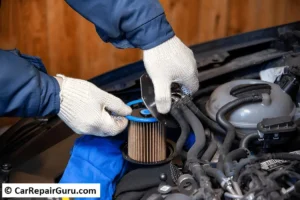
A clogged fuel filter can block the flow of gasoline to the engine, preventing your car from starting or running smoothly. Over time, dirt, debris, and contaminants accumulate in the filter, restricting fuel delivery and causing performance issues.
Symptoms of a Clogged Fuel Filter:
- Car won’t start, but lights and electronics work (indicating the battery isn’t the issue).
- Engine misfires or hesitates, especially during acceleration.
- Frequent stalling due to inconsistent fuel flow.
- Reduced fuel efficiency from an overworked fuel system.
Common Causes:
- Dirt and debris buildup in the fuel filter over time.
- Poor-quality fuel containing excessive contaminants.
- Skipping regular maintenance, allowing the filter to clog completely.
How to Fix It:
- Check for fuel flow issues—if the engine cranks but doesn’t start, the filter could be the culprit.
- Replace the fuel filter every 20,000–30,000 miles (or as recommended by your car’s manufacturer).
- Use high-quality fuel to minimize debris buildup.
- Inspect the fuel system for leaks or damage when replacing the filter.
If your car still won’t start after replacing the fuel filter, the issue may lie with the fuel pump, injectors, or ignition system.
Bad Spark Plugs
Spark plugs are essential for igniting the fuel-air mixture in your engine. If they’re worn out, dirty, or incorrectly gapped, your car may struggle to start—or fail to start altogether.
Signs of Bad Spark Plugs:
- Engine won’t start or struggles to start (especially in cold weather).
- Rough idling or engine misfires, causing a shaky ride.
- Loss of acceleration and poor fuel efficiency due to incomplete combustion.
- Check engine light turns on, indicating ignition issues.
Common Causes:
- Worn-out spark plugs (over time, they degrade and lose effectiveness).
- Incorrect gapping, leading to weak or no spark.
- Carbon buildup from burning low-quality fuel.
How to Fix It:
- Check the spark plugs for wear, corrosion, or carbon deposits.
- Replace spark plugs every 30,000–100,000 miles (depending on type and vehicle).
- Ensure proper gapping using a spark plug gap gauge.
- Use high-quality fuel and regular maintenance to prevent buildup.
If your car won’t start after changing spark plugs, the issue may be with the ignition coils, fuel system, or starter motor.
Alternator Problems
The alternator is responsible for charging your car’s battery and powering electrical components. If it fails, your battery will eventually drain, leading to starting issues and electrical malfunctions.
Signs of a Bad Alternator:
- Dim or flickering headlights while driving.
- Dashboard warning lights (often a battery or alternator symbol).
- Car won’t start, but the battery is new (suggesting the alternator isn’t charging it).
- Electrical issues like malfunctioning power windows, radio, or AC.
Common Causes:
- Broken or loose alternator belt, preventing proper power generation.
- Bad voltage regulator, leading to inconsistent or no charging.
- Worn-out alternator components, causing low voltage output.
How to Fix It:
- Test the battery voltage—a fully charged battery should read around 12.6V, and an alternator should produce 13.8V–14.2V while running.
- Inspect the alternator belt—if it’s loose or broken, replace it.
- Check the alternator output with a multimeter—low voltage means it needs replacement.
- Replace the alternator if it’s not charging properly.
If your car won’t start after replacing the alternator, check for wiring issues, a faulty battery, or a bad ignition switch.
Security System Issues
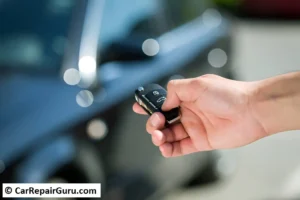
Modern vehicles come equipped with anti-theft security systems that prevent unauthorized starts. While this feature helps protect your car, it can sometimes mistakenly prevent you from starting your own vehicle.
Signs of a Security System Issue:
- Car won’t start, but the battery is good (no clicking or cranking sound).
- Key fob not working or failing to unlock the car.
- Security light flashing on the dashboard.
- Engine starts for a second, then shuts off (immobilizer activation).
Common Causes:
- Immobilizer system activated due to incorrect key use or interference.
- Dead or weak key fob battery, preventing proper communication.
- Faulty key chip or ignition reader, leading to security lockout.
How to Fix It:
- Try using a spare key—if the car starts, the original key may be faulty.
- Replace the key fob battery, as a weak signal may trigger security issues.
- Reset the security system by locking and unlocking the doors with the key fob.
- Disconnect the car battery for 10 minutes, then reconnect it to reset the system.
If your car still won’t start after resetting the security system, consult the owner’s manual or a professional mechanic to reprogram the key or diagnose deeper electrical issues.
Conclusion
A car that won’t start can be frustrating and inconvenient, but understanding the most common causes can help you troubleshoot the issue quickly. Problems like a dead battery, faulty starter motor, bad alternator, clogged fuel filter, or security system malfunctions are among the most frequent culprits.
Regular maintenance—such as checking your battery, replacing spark plugs, and ensuring clean fuel and filters—can prevent many of these issues before they leave you stranded. If you experience symptoms like clicking sounds, dim lights, or a cranking engine that won’t start, following this guide can help you identify the root cause and fix it.
However, if your car still won’t start after trying these solutions, it’s best to consult a professional mechanic. Some issues, like internal engine problems or complex electrical faults, require specialized tools and expertise. Stay proactive with maintenance, and you’ll reduce the chances of unexpected breakdowns!
FAQ
Why won’t my car start but the battery is good?
Even if your battery is charged, issues like a bad starter, faulty ignition switch, or clogged fuel filter can prevent your car from starting.
What should I do if my car won’t start and just clicks?
A clicking noise often points to a dead battery, faulty starter, or bad alternator. Try jump-starting your car or testing the starter.
Why does my car crank but not start?
This usually happens due to fuel system problems, bad spark plugs, or an issue with the ignition system. Check for fuel delivery and spark plug health.
Can cold weather prevent my car from starting?
Yes, extreme cold can drain your car battery and cause fuel thickening, making it harder for the engine to turn over.
How do I reset my car’s security system if it won’t start?
Try using a spare key, locking and unlocking the doors, or disconnecting the battery for a few minutes to reset the security system.
